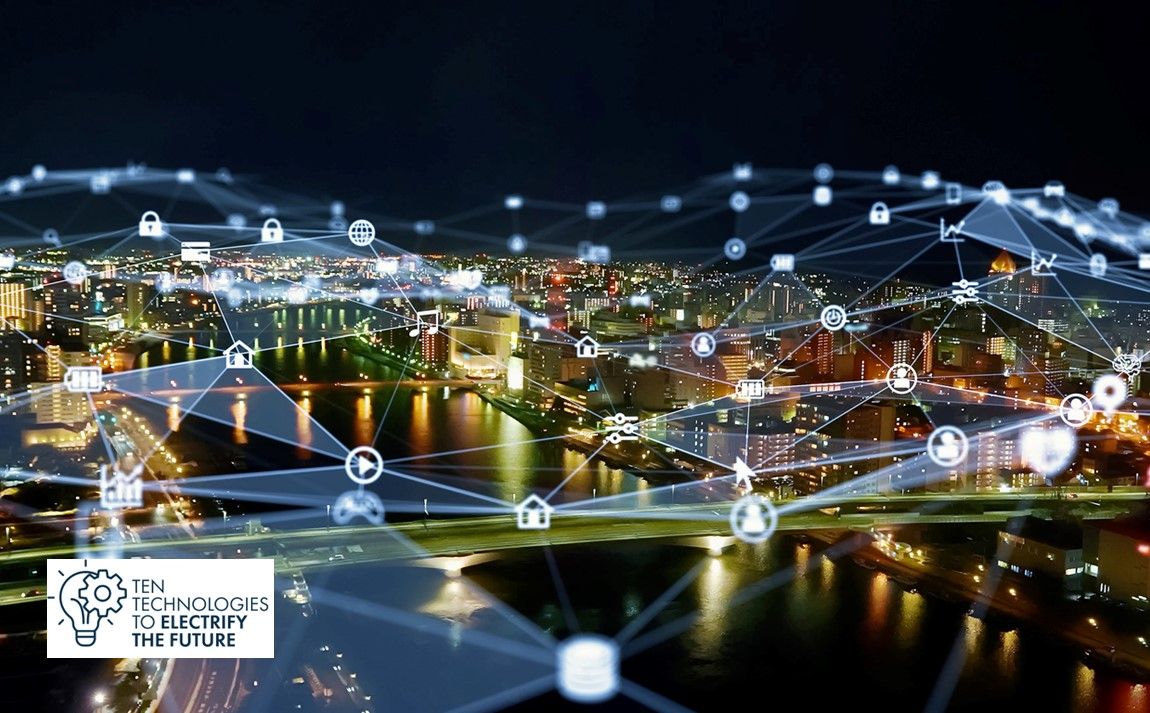- Markets
- Catalogue
- Services
- Tools & Resources
- Downloads
- About Nexans
- Newsroom
-
Nexans Insights
- Nexans Insights
-
Blog Posts
- Overview
- Growing demand for copper and its future
- Electromobility: the road to building an increasingly sustainable transport system
- Guide to Prevent Fires and Accidents at Home (only in Spanish)
- Ten technologies to electrify the future: Electrical and Fire Safety
- Big data & AI
- IoT
- Unveiling innovations transforming the industry
- Transforming buildings industry with 3D printing and modular construction
- The path to effective fire safety in buildings
- Powering the digital change
- Unleashing the power of DC buildings
- Sustainable buildings for a brighter future
- Industry 1, 2, 3, 4... and 5.0
- Nexans copper odyssey
- Search
- Contact us
- Compare
- Sign in
Ten new technologies to electrify the future: IoT


The Internet of Things and connected objects: the stakes ahead
By 2030, there will be 30 billion connected objects worldwide, including 244 million in France, according to estimates by ADEME (the French Agency for Ecological Transition) and Arcep (the country’s electronic communications authority). Some will be everyday objects, others will be used in professional applications.
The Internet of Things (IoT) is briming with development potential and exciting possibilities for homes and businesses. As it expands, the IoT also brings new innovative solutions for electrification. It will help industrial companies increase their productivity and help people reduce their energy consumption at home. And it is growing 15% to 20% a year across the board.
Let’s deep dive into the IoT concept, the prospects for harnessing electrification, and the issues and challenges surrounding it.
The Internet of Things: how does it work?
The IoT is a network of connected devices with built-in microprograms, sensors and connectors enabling them to interact with the Internet. Examples range from household appliances to electricity meters and on to cable drums.
The IoT, in a nutshell, makes things smart. They can collect data, process it onsite and share it online or with other devices to analyze it in more depth. Then they can take measures to improve operations or automate tasks.
When you transfer data online, you can build an intelligent ecosystem where you can use devices in more sensible and more modular ways. You can upgrade a home into a smart home, a city into a smart city and a grid into a smart grid. In France, with 35 million smart meters, electrification is among the sectors that have reached the most advanced stages of digitalization with the IoT. And it will reach even further as Enedis, which operates the country’s electricity distribution system, has announced plans to install 250,000 sensors throughout its grid over the next 5 years.
The possibilities on the operation side are opening up numerous opportunities. For example, home automation environments will be able to manage energy consumption. For connected objects to communicate effectively, however, they need specific systems. These include radio-wave modules, sensors, cellular routers and gateways, and they are all essential to manage data flows and tackle the related challenges.
IoT and innovative electrification solutions
The IoT is bringing in an array of electrification solutions that create value in homes and companies:
- Managing energy consumption: the IoT can help consumers keep an eye on their energy consumption and manage it more efficiently using real-time electricity and gas meter readings. Smart connected objects can also be programmed to switch off automatically when they are not being used, which also reduces energy costs.
- Monitoring equipment: companies can use the IoT to monitor their solar panels, wind turbines and other systems remotely, to make sure they are running properly and optimize their output.
- Storing energy: the IoT can also help to monitor and manage storage levels, and optimize battery charging-discharging cycles.
- Reducing costs: the IoT can also help to reduce operation and servicing costs by enabling predictive maintenance, shortening downtime, and optimizing supply chains and use of resources.
- Optimizing grid operation: the IoT does this by tracking demand for energy in real time and adjusting supply accordingly, which can help to reduce power production costs and optimize distribution.
Issues and challenges around connected products
There are several practical and economic issues and challenges surrounding IoT operation.
IoT communication
When you have objects scattered around the globe, the first challenge is to interconnect them. Some of them may be in city centers, others may be in out-of-the-way places that telecom networks barely reach. To tackle this challenge and improve scalability, Nexans uses a variety of communication protocols and teams up with telecom operators worldwide.
Then you must integrate the routers, sensors and other devices mentioned earlier. Three main notions come into play in IoT rollout:
- the reach of the equipment and connected objects you use;
- energy consumption;
- bandwidth requirements and capacity.
In other words, you must adapt the available resources to match the complexity of the infrastructure—and that infrastructure can span a local area, a country or the globe. That is why it is important to partner up with other experts, as Nexans started doing with Orange in 2020.
Cybersecurity for the IoT
Cybersecurity is as central to the IoT as its efficiency. The more connected objects, the greater the risk of cyberattacks, because the objects collect sensitive data and can provide hackers with a back door into a company’s information system. The entry point can be a computer as much as a connected object.
Even something as simple as a camera can be a way into the core system. A casino in London, for example, was hacked through an Internet-connected fish-tank thermometer linked to the rest of the system. Ironclad security protocols are an absolute must for the IoT: a device can be a risk however harmless it may seem.
The IoT business model
Large-scale IoT rollout is viable even when you factor in all the complexity associated with integration. It for instance provides several advantages in industrial production and supply chains:
- smoother goods flows and real-time monitoring and updates;
- more efficient collaboration between departments;
- better goods tracking and transit;
- swift and secure data collection;
- tighter control over stock.
Besides all of the above, customer service teams can respond faster, especially when they have to deal with delivery delays or other problems.
Ultracker: the Nexans solution to optimize supply chains
Here at Nexans, we have developed Ultracker, a pioneering digital solution to harness the possibilities in the data collected by IoT sensors, combined with artificial intelligence and cloud storage.
With this solution, our customer installers and utilities can:
- 1. optimize their working capital and logistics flows;
- 2. shrink their carbon footprint by shortening drum rotation cycles;
- 3. reduce losses and prevent cable theft.
The IoT trackers embedded in our cable drums and transportation fleets, and our cable-related products, enable customers to track drum status more closely, see a clearer picture of their stock levels and supervise jobsites remotely. This cuts raw material and supply wastage.
Nexans’ IoT expertise, and the solutions we have set up with our partners enable cable system and cable life cycles management, range from delivery on site to measuring how much cable there is left on a drum before pick-up. A leading European electricity distributor that adopted Ultracker to monitor its cables via the IoT is saving over €1 million a year.
Our websites
Select your country to find our products and solutions
-
Africa
- Africa
- Ghana
- Ivory Coast
- Morocco
- North West Africa
- Americas
- Asia
- Europe
- Oceania